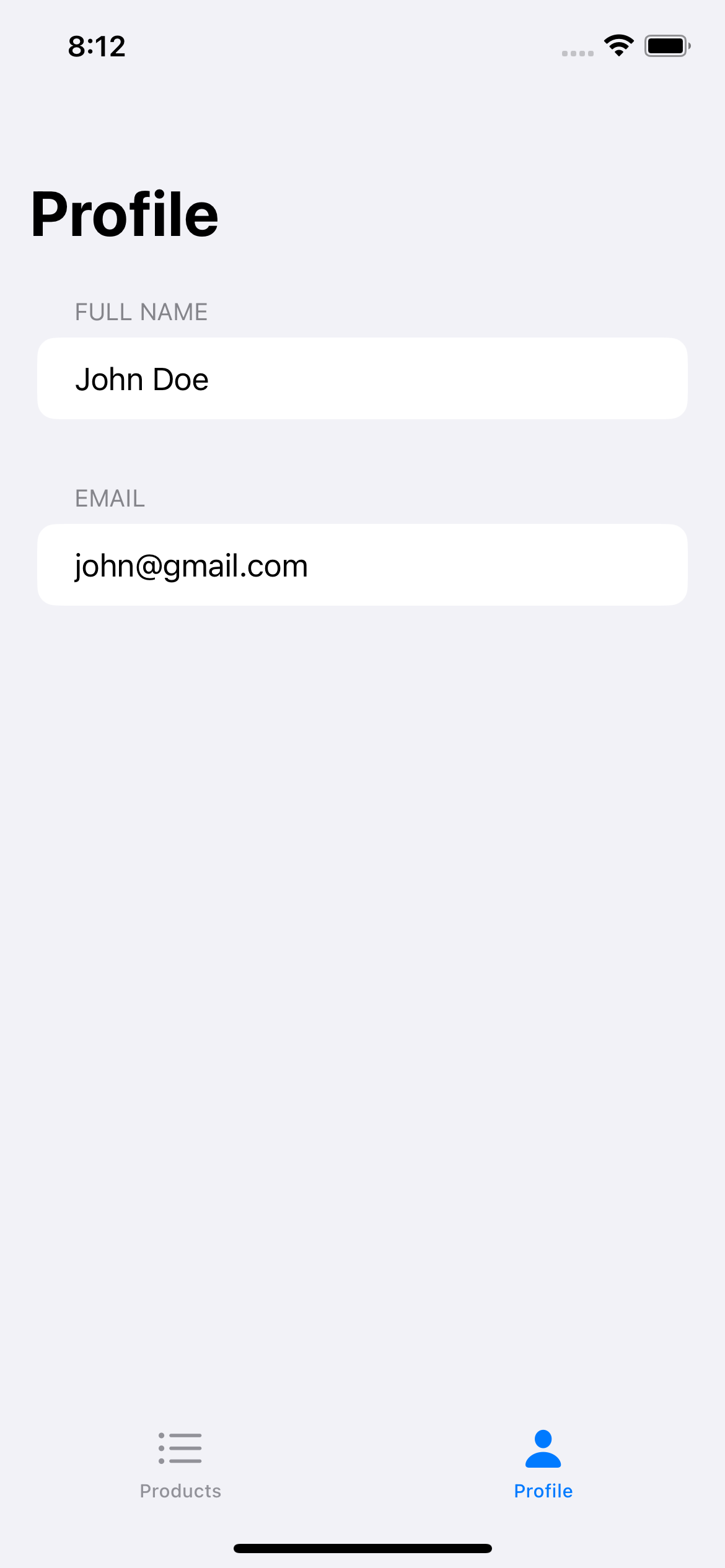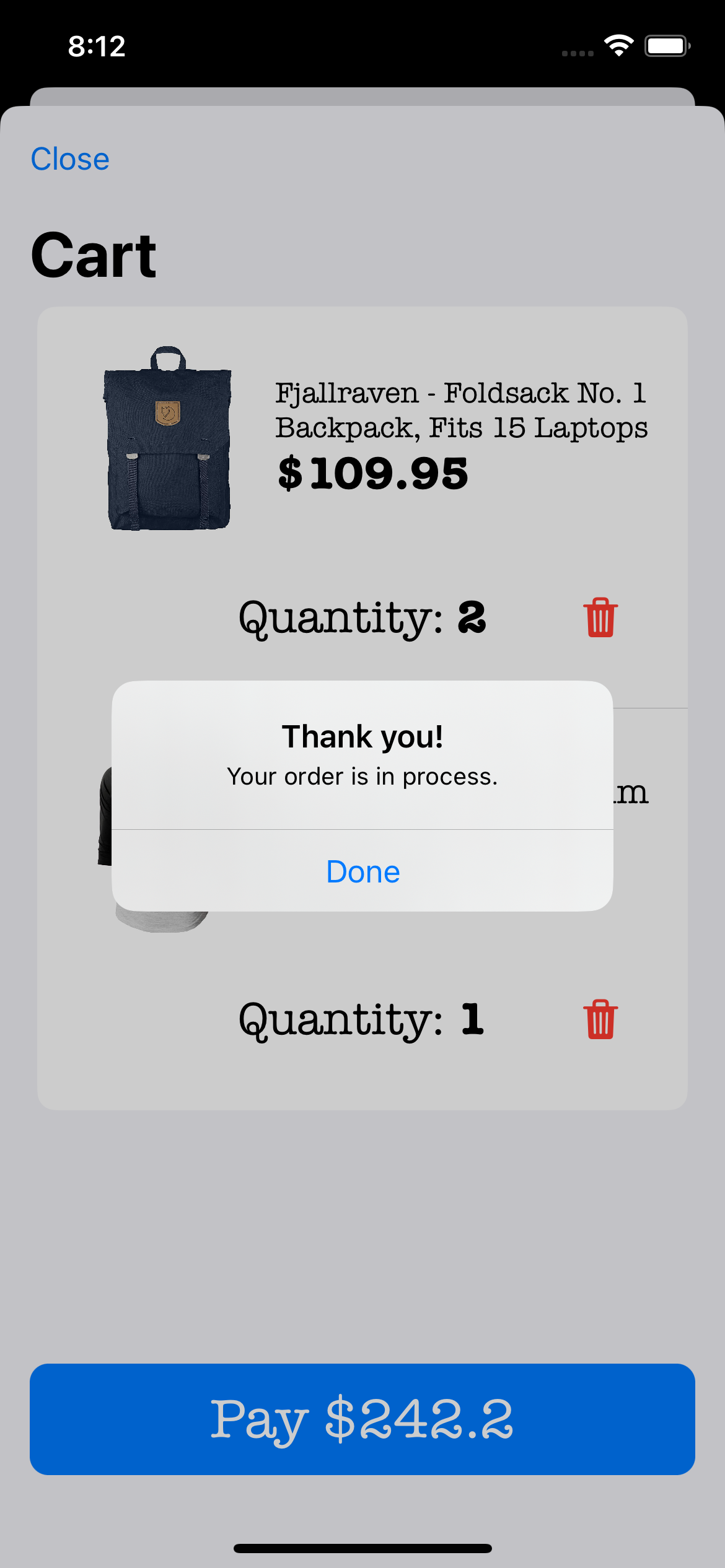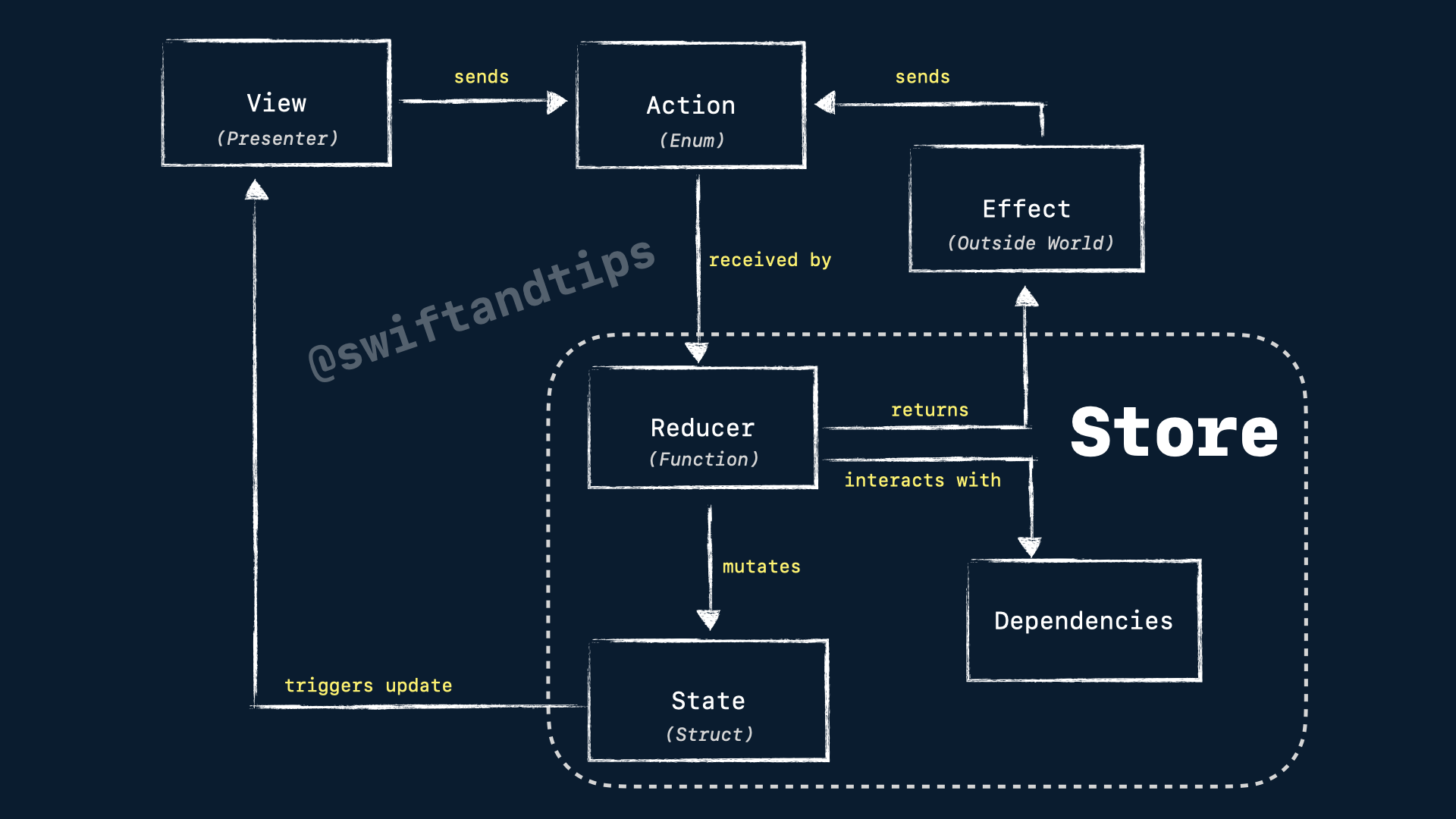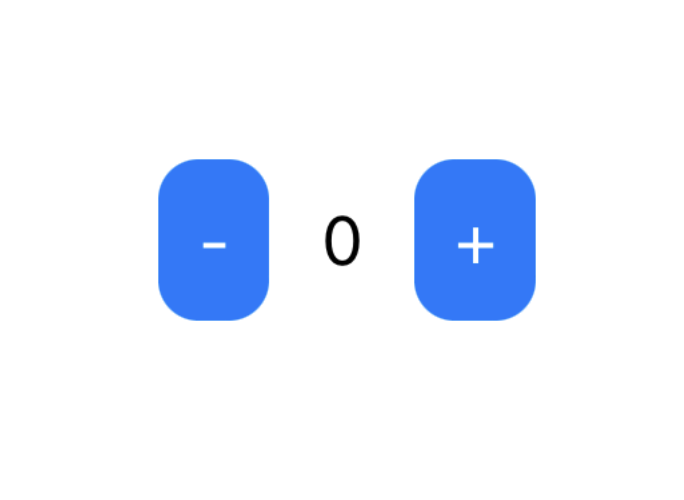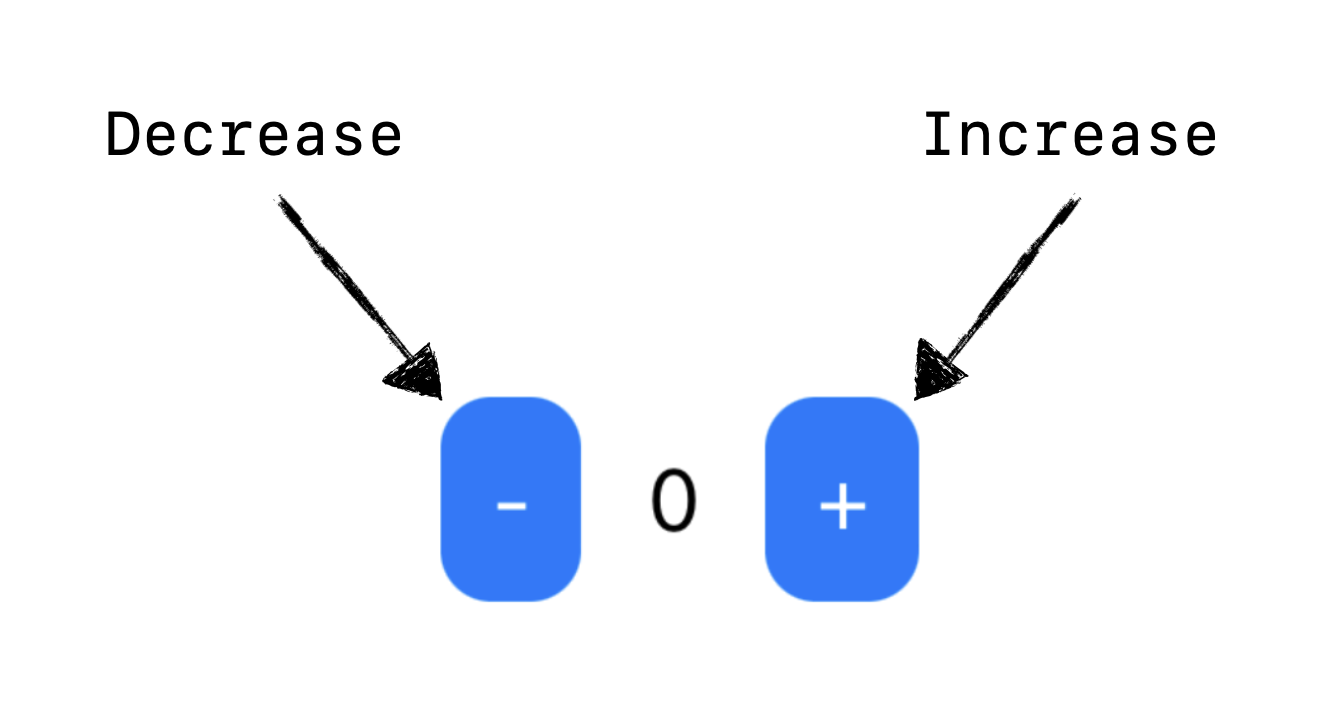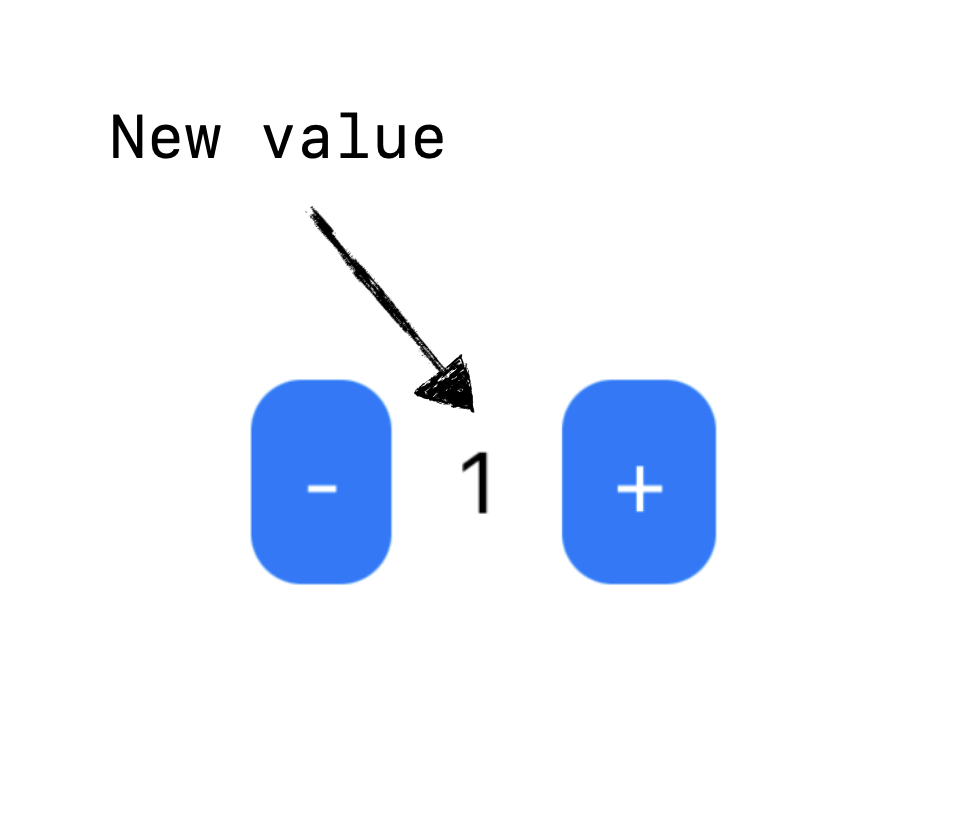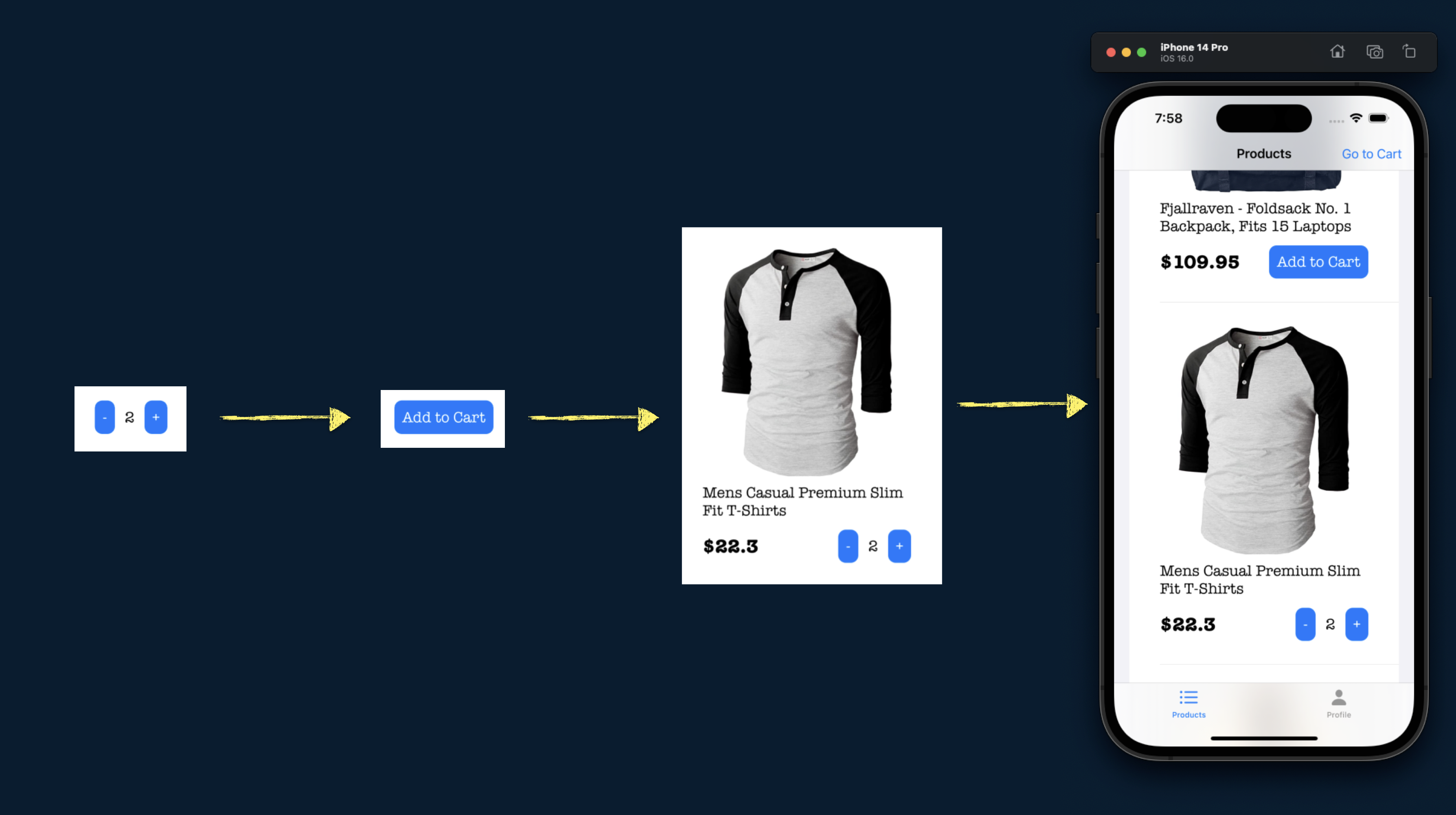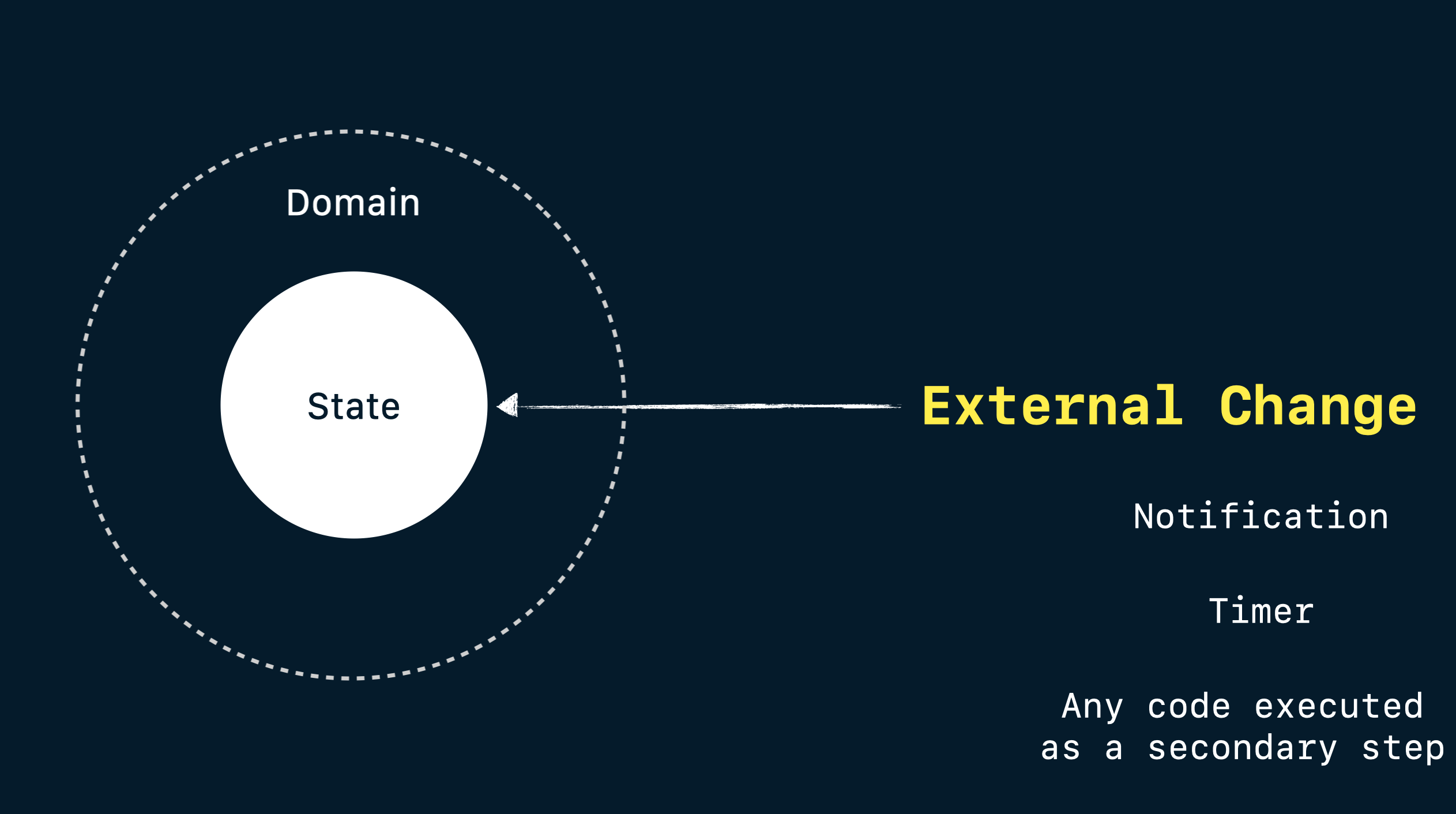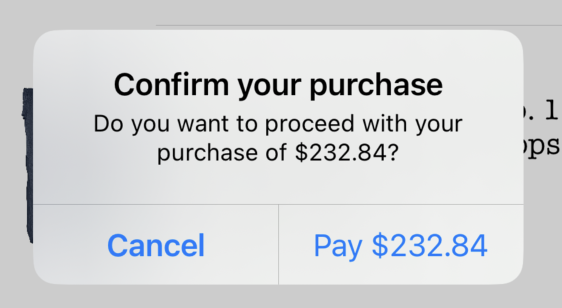- This demo was implemented using version 1.15.2 of TCA.
- The demo runs on iOS 17.6 and above.
- All credits about TCA go to Brandon Willams, Stephen Celis and the incredible team at pointfree.co ❤️.
The purpose of this demo is to provide an introduction to the main concepts of TCA. If you are new to TCA, I highly recommend starting with the README from the main repository and watching the informative Tour of TCA. These resources will provide you with a solid foundation and a comprehensive understanding of the TCA framework.
- Motivation
- Screenshots of the app
- The basics
- Composition
- Dependencies
- Side Effects
- Navigation
- Testing
- Other Topics
- Contact
TL;DR: This project aims to build an app using TCA, striking a balance between simplicity and complexity. It focuses on exploring the most important use cases of TCA while providing concise and accessible documentation for new learners. The goal is to create a valuable learning resource that offers practical insights into using TCA effectively.
I aimed to showcase the power of the TCA architecture in building robust applications for the Apple ecosystem, including iOS, macOS, and more excitingly, its future expansion beyond the Apple world! 🚀
While there are many articles available that demonstrate simple one-screen applications to introduce TCA's core concepts, I noticed a gap between these basic demos and real-world applications like isoword, which can be complex and challenging to understand certain important use cases (like navigation and how reducers are glued).
In this demo, I have implemented a minimal online store that connects to a real network API (https://fakestoreapi.com). It features a product list, the ability to add items to the cart, and the functionality to place orders. While the requests are not processed in real-time (as it uses a fake API), the network status is simulated, allowing you to experience the interaction and mapping of network calls using TCA.
While this demo may not be a full-scale real-world application, it includes enough reducers to illustrate how data can be effectively connected and how domains can be isolated to handle specific components within the app (e.g., Tabs -> Product List -> Product Cell -> Add to Cart button).
Furthermore, I have created tests to demonstrate one of TCA's key features: ensuring that tests fail if the expected state mutations are not captured accurately. This showcases how TCA promotes testability and helps ensure the correctness of your application.
If you're looking to dive into TCA, this demo provides a valuable middle ground between simple examples and complex projects, offering concise documentation and practical insights into working with TCA in a more realistic application setting.
Any feedback is welcome! 🙌🏻
Consider the following implementation of a simple app using TCA, where you will have two buttons: one to increment a counter displayed on the screen and the other to decrement it.
Here's an example of how this app would be coded with TCA:
- A struct that will represent the domain of the feature. This struct must conform
ReducerProtocolprotocol and providingStatestruct,Actionenum andreducemethod.
struct CounterDomain: ReducerProtocol {
struct State {
// State of the feature
}
enum Action {
// actions that use can do in the app
}
func reduce(into state: inout State, action: Action) -> EffectTask<Action> {
// Method that will mutate the state given an action.
}
}- The view that is presented in the screen will display the current state of the app.
struct State: Equatable {
var counter = 0
}- When the user presses a button (let's say increase button), it will internally send an action to the store.
enum Action: Equatable {
case increaseCounter
case decreaseCounter
}- The action will be received by the reducer and proceed to mutate the state. Reducer MUST also return an effect, that represent logic from the "outside world" (network calls, notifications, database, etc). If no effect is needed, just return
EffectTask.none.
func reduce(into state: inout State, action: Action) -> EffectTask<Action> {
switch action {
case .increaseCounter:
state.counter += 1
return .none
case .decreaseCounter:
state.counter -= 1
return .none
}
}- Once the mutation is done and the reducer returned the effect, the view will render the update in the screen.
- To observe state changes in TCA, we need an object called
viewStore, that in this example is wrapped within WithViewStore view. We can send an action from the view to the store usingviewStore.send()and anActionvalue.
struct ContentView: View {
let store: Store<State, Action>
var body: some View {
WithViewStore(self.store) { viewStore in
HStack {
Button {
viewStore.send(.decreaseCounter)
} label: {
Text("-")
.padding(10)
.background(.blue)
.foregroundColor(.white)
.cornerRadius(10)
}
.buttonStyle(.plain)
Text(viewStore.counter.description)
.padding(5)
Button {
viewStore.send(.increaseCounter)
} label: {
Text("+")
.padding(10)
.background(.blue)
.foregroundColor(.white)
.cornerRadius(10)
}
.buttonStyle(.plain)
}
}
}
}- View is initialized by a
Storeobject.
ContentView(
store: Store(
initialState: CounterDomain.State(),
reducer: CounterDomain()
)
)If you want to learn more about the basics, check out the following video
Note: The videos shared here were made using the legacy version of TCA with Environment and without
ReducerProtocol. If you want to see the legacy version of TCA, check out this branch.
Composition refers to the process of building complex software systems by combining smaller, reusable software components. Take a look to this image:
We started with a simple button counter, then we add an extra state to display text, next we put the whole button in a Product cell, and finally, each product cell will be part of a Product list. That is composition!
In the previous example, we demonstrated the usage of reduce(into:action:) to create our reducer function and define how state will be modified for each action. However, it's important to note that this method is suitable only for leaf components, which refer to the smallest components in your application.
For larger components, we can leverage the body property provided by the ReducerProtocol. This property enables you to combine multiple reducers, facilitating the creation of more comprehensive components. By utilizing the body property, you can effectively compose and manage the state mutations of these larger components.
var body: some ReducerProtocol<State, Action> {
ChildReducer1()
Reduce { state, action in
switch action {
case .increaseCounter:
state.counter += 1
return .none
case .decreaseCounter:
state.counter -= 1
return .none
}
}
ChildReducer2()
}The Reduce closure will always encapsulate the logic from the parent domain. To understand how to combine additional components, please continue reading below.
Compared to the previous version of TCA without
ReducerProtocol, the order of child reducers will not affect the result. Parent Reducer (Reduce) will be always executed at the end.
For single states (all except collections/lists), TCA provides operators to glue the components and make bigger ones.
store.scope is an operator used in views to get the child domain's (AddToCartDomain) state and action from parent domain (ProductDomain) to initialize subviews.
For example, the ProductDomain below contains two properties as part of its state: product and addToCartState.
struct ProductDomain: ReducerProtocol {
struct State: Equatable, Identifiable {
let product: Product
var addToCartState = AddToCartDomain.State()
}
// ...
Furthermore, we utilize an action with an associated value that encapsulates all actions from the child domain, providing a comprehensive and cohesive approach.
struct ProductDomain: ReducerProtocol {
// State ...
enum Action {
case addToCart(AddToCartDomain.Action)
}
// ...
Let's consider the scenario where we need to configure the ProductCell view below. The ProductCell is designed to handle the ProductDomain, while we need to provide some information to initialize the AddToCartButton. However, the AddToCartButton is only aware of its own domain, AddToCartDomain, and not the ProductDomain. To address this, we can use the scope method from store to get the child's state and action from parent domain. This enables us to narrow down the scope of the button to focus solely on its own functionality.
struct ProductCell: View {
let store: Store<ProductDomain.State, ProductDomain.Action>
var body: some View {
WithViewStore(self.store) { viewStore in
// More views here ...
AddToCartButton(
store: self.store.scope(
state: \.addToCartState,
action: ProductDomain.Action.addToCart
)
)
}
}
By employing this approach, the AddToCartDomain will solely possess knowledge of its own state and remain unaware of any product-related information.
Scope is utilized within the body to seamlessly transform the child reducer (AddToCart) into a compatible form that aligns with the parent reducer (Product). This allows for smooth integration and interaction between the two.
var body: some ReducerProtocol<State, Action> {
Scope(state: \.addToCartState, action: /ProductDomain.Action.addToCart) {
AddToCartDomain()
}
Reduce { state, action in
// Parent Reducer logic ...
}
}This transformation becomes highly valuable when combining multiple reducers to construct a more complex component.
In earlier versions, the
pullbackandcombineoperators were employed to carry out the same operation. You can watch this video.
Are you looking to manage a collection of states? TCA offers excellent support for that as well!
In this particular example, instead of using a regular array, TCA requires a list of (Product) states, which can be achieved by utilizing IdentifiedArray:
struct ProductListDomain: ReducerProtocol {
struct State: Equatable {
var productList: IdentifiedArrayOf<ProductDomain.State> = []
// ...
}
// ...
}The forEach operator functions similarly to the Scope operator, with the distinction that it operates on a collection of states. It effectively transforms the child reducers into compatible forms that align with the parent reducer.
struct ProductListDomain: ReducerProtocol {
// State and Actions ...
var body: some ReducerProtocol<State, Action> {
Reduce { state, action in
// Parent Reducer...
}
.forEach(
\.productList,
action: /ProductListDomain.Action.product(id:action:)
) {
ProductDomain()
}
}
}Subsequently, in the user interface, we employ ForEachStore and store.scope to iterate through all the (Product) states and actions. This enables us to send actions to the corresponding cell and modify its state accordingly.
List {
ForEachStore(
self.store.scope(
state: \.productListState,
action: ProductListDomain.Action
.product(id: action:)
)
) {
ProductCell(store: $0)
}
}There's a legacy
forEachoperator, If you want to learn more, check out this video
In previous iterations of TCA, Environment played a crucial role in consolidating all the dependencies utilized by a domain.
With the introduction of the ReducerProtocol, we have eliminated the concept of Environment. As a result, dependencies now reside directly within the domain.
struct ProductListDomain: ReducerProtocol {
// State ...
// Actions...
var fetchProducts: () async throws -> [Product]
var sendOrder: ([CartItem]) async throws -> String
var uuid: () -> UUID
// Reducer ...
}Nevertheless, we have the option to leverage the Dependencies Framework to achieve a more enhanced approach in managing our dependencies:
struct ProductListDomain: ReducerProtocol {
// State ...
// Actions...
@Dependency(\.apiClient.fetchProducts) var fetchProducts
@Dependency(\.apiClient.sendOrder) var sendOrder
@Dependency(\.uuid) var uuid
// Reducer ...
}If you want to learn more about how Environment object works on TCA, take a look to this video
A side effect refers to an observable change that arises when executing a function or method. This encompasses actions such as modifying state outside the function, performing I/O operations to a file or making network requests. TCA facilitates the encapsulation of such side effects through the use of EffectTask objects.
If you want to learn more about side effects, check out this video
Network calls are a fundamental aspect of mobile development, and TCA offers robust tools to handle them efficiently. As network calls are considered external interactions or side effects, TCA utilizes the EffectTask object to encapsulate these calls. Specifically, network calls are encapsulated within the EffectTask.task construct, allowing for streamlined management of asynchronous operations within the TCA framework.
However, it's important to note that the task operator alone is responsible for making the web API call. To obtain the actual response, an additional action needs to be implemented, which will capture and store the result within a TaskResult object.
struct ProductListDomain: ReducerProtocol {
// State and more ...
enum Action: Equatable {
case fetchProducts
case fetchProductsResponse(TaskResult<[Product]>)
}
var fetchProducts: () async throws -> [Product]
var uuid: () -> UUID
var body: some ReducerProtocol<State, Action> {
// Other child reducers...
Reduce { state, action in
switch action {
case .fetchProducts:
return .task {
// Just making the call
await .fetchProductsResponse(
TaskResult { try await fetchProducts() }
)
}
case .fetchProductsResponse(.success(let products)):
// Getting the success response
state.productListState = IdentifiedArrayOf(
uniqueElements: products.map {
ProductDomain.State(
id: uuid(),
product: $0
)
}
)
return .none
case .fetchProductsResponse(.failure(let error)):
// Getting an error from the web API
print("Error getting products, try again later.", error)
return .none
}
}
}
}To learn more about network requests in TCA, I recommend watching this insightful video that explains asynchronous requests. Additionally, you can refer to this informative video that demonstrates the configuration of a real web API call, providing practical insights into the process.
Navigation is a huge and complex topic. Navigation are alerts, confirmation dialogs, sheets, popovers and links. Also, you can add a custom navigations if you want. In this project you will see alerts and sheets.
The TCA library offers support for AlertView, enabling the addition of custom state and a consistent UI building approach without deviating from the TCA architecture. To create your own alert using TCA, follow these steps:
- Create the alert actions inside of the Action enum of the reducer. The recommended way is create a nested enum inside the action.
enum Action: Equatable {
enum Alert {
case alertAction1
case alertAction2
....
}
}- Next, create a case alert and use
PresentationAction.
enum Action: Equatable {
case alert(PresentationAction<Alert>)
case alertButtonTapped
enum Alert {
case alertAction1
case alertAction2
....
}
}PresentationAction is a generic that represents the presented actions and an special action named dismiss. This is very useful case because with the dismiss action, the reducer can manage if a side effect is running and remove to the system. More information about effect cancelling in navigations here.
public enum PresentationAction<Action> {
/// An action sent to `nil` out the associated presentation state.
case dismiss
/// An action sent to the associated, non-`nil` presentation state.
indirect case presented(Action)
}- Create an alert state inside of the reducer.
@Presents var alert: AlertState<Action.Alert>?@Presents is a property wrapper that you need to use when creates a navigation state in the reducer. The reason to use @Presents is when composing a lots of features together, the root state could overflow the stack. More information here.
- Extent
AlertStateand create as many alerts as you want. You can create a property wrapper or a function if you need some dynamic information.
extension AlertState where Action == CartListDomain.Action.Alert {
static var successAlert: AlertState {
AlertState {
TextState("Thank you!")
} actions: {
ButtonState(action: .dismissSuccessAlert, label: { TextState("Done") })
ButtonState(role: .cancel, action: .didCancelConfirmation, label: { TextState("Cancel") })
} message: {
TextState("Your order is in process.")
}
}
static func confirmationAlert(totalPriceString: String) -> AlertState {
AlertState {
TextState("Confirm your purchase")
} actions: {
ButtonState(action: .didConfirmPurchase, label: { TextState("Pay \(totalPriceString)") })
ButtonState(role: .cancel, action: .didCancelConfirmation, label: { TextState("Cancel") })
} message: {
TextState("Do you want to proceed with your purchase of \(totalPriceString)?")
}
}
}- Inside of the body of the reducer you can set the alert. As the state is an optional value, you need to implement
ifLetin the reducer. This is a particular modifier that not need a reducer like a tipicalifLetreducer.
Another question is when you use a reducer for navigation, you will use the binding operator $ in the state. This is because navigation modifiers in SwiftUI use a binding for presenting, usually the isPresented boolean. In this case, in order to manage when the alert is presented or no, you use a binding state in the reducer. Now, the reducer is fully synchronized with the view.
var body: some ReducerOf<Self> {
Reduce { state, action in
switch action {
case .alert:
return .none
case .alertButtonTapped:
state.alert = .successAlert
return .none
}
}
.ifLet(
\.$alert,
action: \.alert
)
}- Finally, implements
AlertViewmodifier in the view. Remember, you use the binding$operator.
.alert(
store: store.scope(
state: \.$alert,
action: \.alert
)
)See Alerts in previous versions of TCA
The TCA library also offers support for AlertView, enabling the addition of custom state and a consistent UI building approach without deviating from the TCA architecture. To create your own alert using TCA, follow these steps:
- Create an
AlertStatewith actions of your own domain. - Create the actions that will trigger events for the alert:
- Initialize AlertState (
didPressPayButton) - Dismiss the alert (
didCancelConfirmation) - Execute the alert's handler (
didConfirmPurchase)
- Initialize AlertState (
struct CartListDomain: ReducerProtocol {
struct State: Equatable {
var confirmationAlert: AlertState<CartListDomain.Action>?
// More properties ...
}
enum Action: Equatable {
case didPressPayButton
case didCancelConfirmation
case didConfirmPurchase
// More actions ...
}
var body: some ReducerProtocol<State, Action> {
Reduce { state, action in
switch action {
case .didCancelConfirmation:
state.confirmationAlert = nil
return .none
case .didConfirmPurchase:
// Sent order and Pay ...
case .didPressPayButton:
state.confirmationAlert = AlertState(
title: TextState("Confirm your purchase"),
message: TextState("Do you want to proceed with your purchase of \(state.totalPriceString)?"),
buttons: [
.default(
TextState("Pay \(state.totalPriceString)"),
action: .send(.didConfirmPurchase)),
.cancel(TextState("Cancel"), action: .send(.didCancelConfirmation))
]
)
return .none
// More actions ...
}
}
.forEach(\.cartItems, action: /Action.cartItem(id:action:)) {
CartItemDomain()
}
}
} Other type of navigation are sheets. To create your own alert using TCA, follow these steps:
- As the alerts, create the state. You use
@Presentsto avoid accidentally overflow the stack.
@Presents var cartState: CartListDomain.State?- Next, create the action. Remember to use PresentationAction inside the case of the sheet.
case cart(PresentationAction<CartListDomain.Action>)- Create the
ifLetin the reducer. Here, you need to define the reducer of the destination.
.ifLet(\.$cartState, action: \.cart) {
CartListDomain()
}- Finally, in the view, you can define the sheet operator like this.
.sheet(
item: $store.scope(
state: \.cartState,
action: \.cart
)
) { store in
CartListView(store: store)
}See Sheets in previous versions of TCA
### Opening Modal ViewsIf you require to open a view modally in SwiftUI, you will need to use sheet modifier and provide a binding parameter:
func sheet<Content>(
isPresented: Binding<Bool>,
onDismiss: (() -> Void)? = nil, @ViewBuilder content: @escaping () -> Content
) -> some View where Content : ViewTo utilize this modifier (or any modifier with binding parameters) in TCA, it is necessary to employ the binding operator from viewStore and supply two parameters:
- The state property that will undergo mutation.
- The action that will trigger the mutation.
// Domain:
struct Domain: ReducerProtocol {
struct State {
var shouldOpenModal = false
}
enum Action {
case setCartView(isPresented: Bool)
}
var body: some ReducerProtocol<State, Action> {
Reduce { state, action in
switch action {
case .setCartView(let isPresented):
state.shouldOpenModal = isPresented
}
}
}
}
// UI:
Text("Parent View")
.sheet(
isPresented: viewStore.binding(
get: \.shouldOpenModal,
send: Action.setModalView(isPresented:)
)
) {
Text("I'm a Modal View!")
}If you want to lean more about Binding with TCA and SwiftUI, take a look to this video.
Testing is a crucial part of software development. TCA has its own tools to test reducers in a very simple way.
When you test a reducer, you will use a TestStore class passing an initial state and a reducer like the store that you are using in the production code.
Next, you can send an action but, in this case, send receive a closure that you need to expect the result of this action. For example, when you send increseCounter action, you expect that count is equal to 1 if previously, your state counter is 0.
Finally, you send a decreaseCounter and the expectation of this action is count state equal to 0 because previously count was setted to 1.
@MainActor
class CounterDomainTest: XCTestCase {
func testHappyPath() {
let store = TestStore(
initialState: CounterDomain.State(),
reducer: { CounterDomain() }
)
await store.send(.increaseCounter) {
$0.count = 1
}
await store.send(.decreaseCounter) {
$0.count = 0
}
}
}The first thing is the ability to mock every side effect of the system. To do that TestStore has a closure for this purpose.
Notice that fetchProducts action has a side effect. When it finishes, send an action fetchProductsResponse back to the system. When you test this, you will use store.receive for response actions.
@MainActor
class ProductListDomainTest: XCTestCase {
func testSideEffects() {
let products: [Product] = ...
let store = TestStore(
initialState: ProductListDomain.State(),
reducer: { ProductListDomain() }
) {
$0.apiClient.fetchProducts = { products }
}
await store.send(.fetchProducts) {
$0.dataLoadingStatus = .loading
}
await store.receive(.fetchProductsResponse(.success(products))) {
$0.products = products
$0.dataLoadingStatus = .success
}
}
}CasePathable is a nice macro that it has a lot of useful tips. One of those is using keypaths for testing actions. For example, if you have this test.
await store.send(
.cartItem(
.element(
id: cartItemId1,
action: .deleteCartItem(product: Product.sample[0]))
)
) {
...
}We can update this with:
await store.send(\.cartItem[id: cartItemId1].deleteCartItem, Product.sample[0]) {
...
}Another example:
await store.send(.alert(.presented(.didConfirmPurchase)))await store.send(\.alert.didConfirmPurchase)By default, TCA keeps a state in memory throughout the entire lifecycle of an app. However, in certain scenarios, maintaining a state can be resource-intensive and unnecessary. One such case is when dealing with modal views that are displayed for a short duration. In these situations, it is more efficient to use optional states.
Creating an optional state in TCA follows the same approach as declaring any optional value in Swift. Simply define the property within the parent state, but instead of assigning a default value, declare it as optional. For instance, in the provided example, the cartState property holds an optional state for a Cart List.
struct ProductListDomain: ReducerProtocol {
struct State: Equatable {
var productListState: IdentifiedArrayOf<ProductDomain.State> = []
var shouldOpenCart = false
var cartState: CartListDomain.State?
// More properties...
}
}Now, in the Reduce function, we can utilize the ifLet operator to transform the child reducer (CartListDomain) into one that is compatible with the parent reducer (ProductList).
In the provided example, the CartListDomain will be evaluated only if the cartState is non-nil. To assign a new non-optional state, the parent reducer will need to initialize the property (cartState) when a specific action (setCartView) is triggered.
This approach ensures that the optional state is properly handled within the TCA framework and allows for seamless state management between the parent and the optional child reducers.
struct ProductListDomain: ReducerProtocol {
// State and Actions ...
var body: some ReducerProtocol<State, Action> {
Reduce { state, action in
switch action {
// More cases ...
case .setCartView(let isPresented):
state.shouldOpenCart = isPresented
state.cartState = isPresented
? CartListDomain.State(...)
: nil
return .none
}
}
.ifLet(\.cartState, action: /ProductListDomain.Action.cart) {
CartListDomain()
}
}
}Lastly, in the view, you can employ IfLetStore to unwrap a store with optional state. This allows you to conditionally display the corresponding view that operates with that particular state.
List {
ForEachStore(
self.store.scope(
state: \.productListState,
action: ProductListDomain.Action
.product(id: action:)
)
) {
ProductCell(store: $0)
}
}
.sheet(
isPresented: viewStore.binding(
get: \.shouldOpenCart,
send: ProductListDomain.Action.setCartView(isPresented:)
)
) {
IfLetStore(
self.store.scope(
state: \.cartState,
action: ProductListDomain.Action.cart
)
) {
CartListView(store: $0)
}
}If you want to learn more about optional states, check out this video.
By default, when you declare an action in a TCA domain, it is accessible to other reducers as well. However, there are situations where an action is intended to be specific to a particular reducer and does not need to be exposed outside of it.
In such cases, you can simply declare private functions to encapsulate those actions within the domain's scope. This approach ensures that the actions remain private and only accessible within the intended context, enhancing the encapsulation and modularity of your TCA implementation:
var body: some ReducerProtocol<State, Action>
// More reducers ...
Reduce { state, action in
switch action {
// More actions ...
case .cart(let action):
switch action {
case .didPressCloseButton:
return closeCart(state: &state)
case .dismissSuccessAlert:
resetProductsToZero(state: &state)
return .task {
.closeCart
}
}
case .closeCart:
return closeCart(state: &state)
}
}
}
private func closeCart(
state: inout State
) -> Effect<Action, Never> {
state.shouldOpenCart = false
state.cartState = nil
return .none
}
private func resetProductsToZero(
state: inout State
) {
for id in state.productListState.map(\.id)
where state.productListState[id: id]?.count != 0 {
state.productListState[id: id]?.addToCartState.count = 0
}
}For more about private actions, check out this video.
- Invoke the UI
let store: Store<CartListDomain.State, CartListDomain.Action>
Text("Parent View")
.alert(
self.store.scope(state: \.confirmationAlert, action: { $0 }),
dismiss: .didCancelConfirmation
)Explicit action is always needed for
store.scope. Check out this commit to learn more: https://github.com/pointfreeco/swift-composable-architecture/commit/da205c71ae72081647dfa1442c811a57181fb990
This video explains more about AlertView in SwiftUI and TCA.
Creating a Root Domain in TCA is similar to creating any other domain. In this case, each property within the state will correspond to a complex substate. To handle tab logic, we can include an enum that represents each tab item, providing a structured approach to managing the different tabs:
struct RootDomain: ReducerProtocol {
struct State: Equatable {
var selectedTab = Tab.products
var productListState = ProductListDomain.State()
var profileState = ProfileDomain.State()
}
enum Tab {
case products
case profile
}
enum Action: Equatable {
case tabSelected(Tab)
case productList(ProductListDomain.Action)
case profile(ProfileDomain.Action)
}
// Dependencies
var fetchProducts: @Sendable () async throws -> [Product]
var sendOrder: @Sendable ([CartItem]) async throws -> String
var fetchUserProfile: @Sendable () async throws -> UserProfile
var uuid: @Sendable () -> UUID
static let live = Self(
fetchProducts: APIClient.live.fetchProducts,
sendOrder: APIClient.live.sendOrder,
fetchUserProfile: APIClient.live.fetchUserProfile,
uuid: { UUID() }
)
var body: some ReducerProtocol<State, Action> {
Reduce { state, action in
switch action {
case .productList:
return .none
case .tabSelected(let tab):
state.selectedTab = tab
return .none
case .profile:
return .none
}
}
Scope(state: \.productListState, action: /RootDomain.Action.productList) {
ProductListDomain(
fetchProducts: fetchProducts,
sendOrder: sendOrder,
uuid: uuid
)
}
Scope(state: \.profileState, action: /RootDomain.Action.profile) {
ProfileDomain(fetchUserProfile: fetchUserProfile)
}
}
}When it comes to the UI implementation, it closely resembles the standard SwiftUI approach, with a small difference. Instead of using a regular property, we hold the store property to manage the currently selected tab:
struct RootView: View {
let store: Store<RootDomain.State, RootDomain.Action>
var body: some View {
WithViewStore(self.store) { viewStore in
TabView(
selection: viewStore.binding(
get: \.selectedTab,
send: RootDomain.Action.tabSelected
)
) {
ProductListView(
store: self.store.scope(
state: \.productListState,
action: RootDomain.Action
.productList
)
)
.tabItem {
Image(systemName: "list.bullet")
Text("Products")
}
.tag(RootDomain.Tab.products)
ProfileView(
store: self.store.scope(
state: \.profileState,
action: RootDomain.Action.profile
)
)
.tabItem {
Image(systemName: "person.fill")
Text("Profile")
}
.tag(RootDomain.Tab.profile)
}
}
}
}To call RootView, we provide the initial domain state and the reducer:
To instantiate the RootView, you need to provide two parameters: the initial domain state and the reducer:
@main
struct OnlineStoreTCAApp: App {
var body: some Scene {
WindowGroup {
RootView(
store: Store(
initialState: RootDomain.State(),
reducer: RootDomain.live
)
)
}
}
}These elements enable the proper initialization and functioning of the RootView within the TCA architecture.
For a comprehensive understanding of this implementation, I recommend checking out this video.
If you have any feedback, I would love to hear from you. Please feel free to reach out to me through any of my social media channels:
Thanks for reading, and have a great day! 😄


